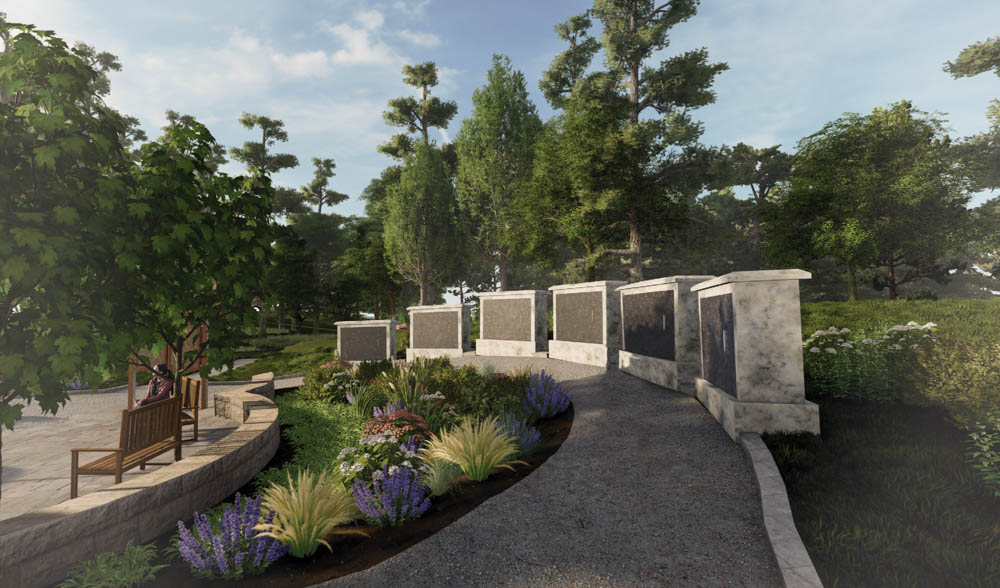By Julian Smith

The late Charles Vandrei, former historic preservation officer at New York State Department of Environment Conservation, works at the excavation site on Courtland Street in 2019. He was instrumental in coordinating the reinterment at Lake George Battlefield Park.
Photo credit: Courtesy of New York State Museum / Albany, New York
In northeastern New York near the border of Vermont, Lake George extends for 30 miles through the Adirondack Mountains. The area has long been famous for its scenery; Thomas Jefferson called the long, narrow lake “without comparison, the most beautiful water I ever saw.” In the summer, the village of the same name at its southern end is a magnet for visitors from New England and beyond, including New York City about 200 miles south.
With its strategic location on the early water route between eastern Canada and colonial New England, Lake George also saw intense military use during the late 18th century. Human remains are frequently recovered during construction projects, and archaeologists estimate there may be hundreds if not thousands more waiting to be unearthed. Most are associated with the French and Indian War (1754-1763), when British and French forces fought for control of French Canada. But a recent discovery in the heart of Lake George village has shed light on a lesser known, but perhaps even more pivotal, chapter in the region’s history.
Due to earlier discoveries of graves in the town, it wasn’t a huge surprise in early February 2019 when builders digging out the basement for a small apartment building on Courtland Street discovered what looked like human bones in the pile of excavated dirt. Local archaeologists were immediately called in, and they noticed the outlines of multiple grave shafts in the sidewall of the basement excavation. The graves were evenly spaced and at the same depth, which suggested the site was likely a cemetery, said Lisa Anderson, curator of bioarchaeology and NAGPRA coordinator at the New York State Museum (NYSM), who helped lead the subsequent investigation.
The developer gave the researchers just two days to examine and excavate the site, saying the delivery schedule for the prefab building could not be changed. “It was truly a salvage operation,” Anderson said. “They had literally started pouring the footings for the foundation between when we first saw it and the next time we were there.”
The days were short and cold, the soil was frozen and there was at least a foot of snow on the ground. Nearly two dozen volunteer archaeologists gathered to help. (They decided the pile of excavated dirt would have to wait until it thawed in the spring.) Headed by Anderson and Charles Vandrei, an archaeologist and historic preservation officer with the New York State Department of Environmental Conservation, the team excavated a row of a dozen partially intact grave shafts that held a total of 15 bodies. Most were single burials, only three of which were in coffins, while one grave held three bodies. Since the construction trench had cut across the row at an angle, some graves were mostly intact but others had already been almost completely destroyed. Many of the bones were heavily fragmented and eroded, so it was a challenge to determine the sex and exact age, but most seem to have been male teenagers. Out of all of the individuals recovered, only five were determined to be over the age of 20, and one was a child under the age of 10. The demographics were consistent with a military-age population—likely young soldiers.
This is an excerpt of Revolutionary War soldiers’ remains to be reinterred in Lake George in American Archaeology, Fall 2024 | Vol. 28 No. 3. Subscribe to read the full text.
FURTHER RESEARCH
New York State Unmarked Burial Site Protection Act
Bioarchaeology at the Courtland Street Burying Ground, New York State Museum
The “Massacre” at Fort William Henry, David Starbuck, Expedition Magazine (March 2008)
“Lake George remains likely first protected under new law,” WTEN (November 2023)




